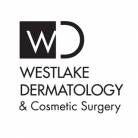6 Skincare Treatments That Should Not Be Done At Home

One of the biggest trends hitting the cosmetic industry is do-it-yourself (DIY) treatments. Today there are many “at-home” treatments on the market including micro-needles, lasers, and powerful creams, all of which were previously only accessible by visiting a skincare professional.
While accessibility and convenience may seem like a good thing, many professionals wonder if doing these treatments on their own is a good idea. Many of these treatments have a lower efficacy rate compared to professional versions. Even worse, some DIY products that are not approved by the FDA can be dangerous and cause unwanted side effects.
Here are some DIY treatments that should be done with a professional instead:
Micro-needling
Micro-needling is a popular and innovative skin rejuvenation process that uses pricks from tiny needles to create microscopic channels on the skin in order to initiate the skin’s development of natural growth factors including collagen and elastin fibers. The controlled injuring of the skin can improve many issues including, wrinkles, sun damage, age spots, acne scarring, and stretch marks. The channels created by micro-needling can also help topical skincare products to better absorb into the skin and thus be more effective.
While at-home versions of micro-needle kits exist, users have to be very careful not to overly damage the skin, which can result in scarring or dermatitis. Also many home kits are not as effective as professional micro-needles used by dermatologists since they do not penetrate as deep into the skin.
Lasers
During the past decade various companies began producing and marketing DIY lasers for hair removal, facial rejuvenation, acne and the reduction of sun damage. The biggest concern with FDA approved home-based laser systems is that they are not very powerful and can only provide minimal results. With minimal correction, these types of lasers should be utilized more for “maintenance” between professional visits rather than a sole solution.
On the flip side, there are cases of non-FDA approved laser devices sold that are too powerful for amateur use, resulting in some serious burns or potential eye injury.
If you are interested in laser treatments your safest solution is to visit an experienced dermatologist or licensed aesthetician that is qualified to offer the latest technologies.
Microdermabrasion
Microdermabrasion is a non-invasive skin resurfacing procedure that exfoliates the outer layer of the skin, removing dead skin cells to make way for new healthy and vibrant looking under-layers. Microdermabrasion has the power to rid the skin of bumps and uneven pigmentation while improving overall skin texture.
Due to its popularity, companies have started to produce home microdermabrasion kits. While these home kits are fairly safe for use, they are far less effective than professional devices like DiamondTome™. If you have moderate to severe skin issues, home based solutions will provide little to no improvement. But, like the FDA-approved home laser devices, some of these may serve as good maintenance between your professional visits.
Cellulite
Cellulite is one of the most difficult skin conditions to treat. Unfortunately DIY cellulite creams and lotions are completely ineffective for long-term results. At best these treatments, which are typically formulated from caffeine or niacinamide, may temporarily reduce the appearance of cellulite. The only way to achieve dramatic and long-term cellulite removal results is to undergo professional treatments such as Avéli.
Acne Extractions
You are carefully inspecting your skin in the mirror and you suddenly see a glowing red pimple. Your first thought is to squeeze or pop it. While popping it seems like a great solution, you are probably just asking for trouble. When you attempt to extract a pimple yourself there could be serious risks involved, such as:
- Acne that gets worse
- A bacterial infection of the skin
- Scarring or hyperpigmentation
- Broken capillaries
The process of undergoing an acne extraction sounds daunting to most. The skin around the blemish is typically pulled tight and then a sterile, pen-like device called a comedone extractor is placed over the pimple to pop out the material inside. The procedure may need to be repeated should the material within the blemish re-accumulate. However, over time, acne extractions can quickly clear up unsightly acne and help prevent future breakouts when other preventative measures like proper skin care are used. This procedure can also be enhanced when combined with other treatments that only a dermatology clinic can provide, such as topical or oral medications, laser or light treatments and chemical peels. Visiting with a dermatologist early can spare you a lifetime of recurring pimples or costly future treatments for acne scarring.
Chemical Peels
One thing that should never be purchased online and done at home are DIY professional strength chemical peels or prescription strength solutions. There are a variety of chemical solutions, combinations and strengths on the market which is why it is so important to see a dermatologist or aesthetician to determine which variation would be best suited for you based on the skin concern(s).
Chemical peels can achieve the following:
- Correct sun damage
- Reduce acne
- Soften fine lines and wrinkles
- Improve skin discolorations
- Eliminate blackheads
- Temporarily help reduce oiliness
- Help with mild acne scarring
Because there are so many positive things chemical peeling agents can do, it’s best to speak to a professional first to see which chemical agent would be best to address your specific concern.
Certain questions to ask when considering a chemical peel treatment are:
- Do you have any allergies?
- Are you pre-treating correctly prior to putting the chemical on your skin?
- Do you know your post-care instructions or how to take care of your skin after the peel?
- Does the peel require neutralizing?
- Do you purchase from a dermatologist or online?
An experienced skin care professional can guide you through these issues. Depending on the condition you are treating, you’ll need a chemical agent that will address the depth of that concern. Above all else, you need to be safe, know what you’re putting on your skin and be diligent in proper post-treatment care.

Very interesting, I thought most of these made for TV treatments seemed a bit weird. I never understood how someone could feel comfortable doing a laser treatment on themselves at home.